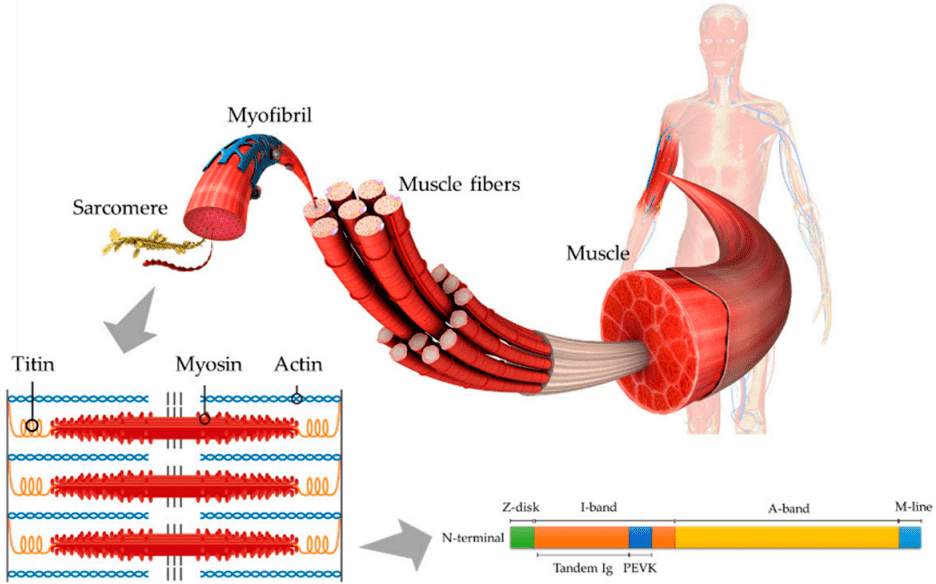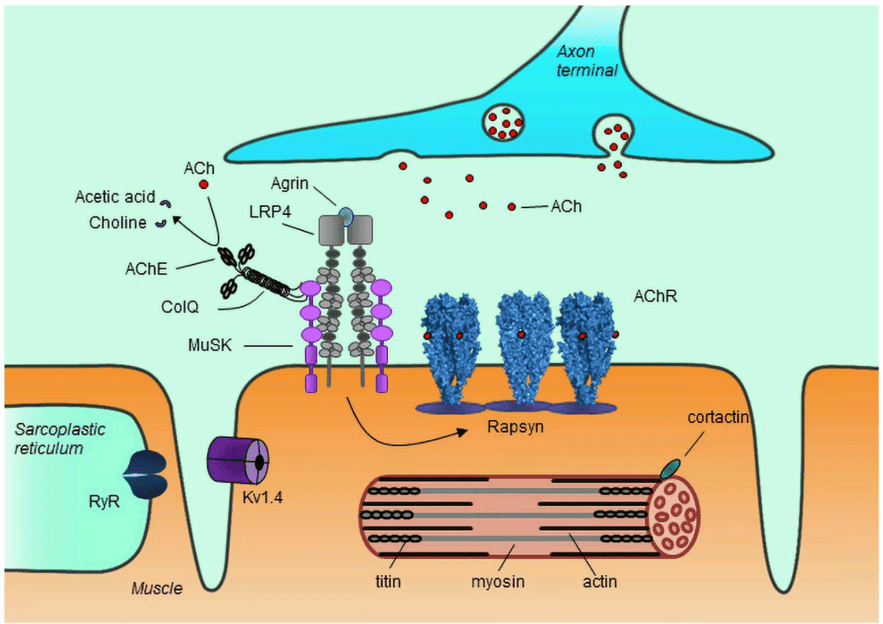NAA Services for Anti-Titin Antibody
Besides the expertise in antibody design and engineering, Creative Biolabs is also dedicated to the areas of natural autoantibody (NAA) high-resolution analysis and disease diagnosis by developing innovative and diversified NAA platforms. Equipped with state-of-the-art research and professional technical team, Creative Biolabs has gained significant knowledge and rich experiences in offering autoantibody related services. At present, we are able to provide a full range of anti-titin marker services for myasthenia gravis (MG) diagnosis and therapeutic monitoring. Our professional team is optimized to help you get a milestone development in your NAA project.
Background of Anti-titin Antibody
Titin is a giant protein that spans half of the striated muscle sarcomere. The I-band portion of the molecule is mainly composed of tandem immunoglobulin (Ig) segments, consisting of serially linked Ig-like domains, and PEVK segment. Titin is one of the major autoantigens recognized by anti-striated muscle antibodies, which are characteristic of generalized MG. Notably, despite the huge size and the complex structure of titin, most anti-titin antibodies recognize a restricted region with a molecular weight of 30 kDa, called MGT30 or the main immunogenic region.
 Fig.1 The illustration of titin in the muscle.1
Fig.1 The illustration of titin in the muscle.1
The Role of Anti-titin Antibody in Myasthenia Gravis (MG)
MG is an autoimmune disease of the neuromuscular junction (NMJ) characterized by fatigability and weakness of striated muscles. In addition to anti-muscle acetylcholine receptor (AChR) antibodies, antibodies recognizing other components of the skeletal muscle and yielding striational immunostaining have long been detected in MG patients. Among several autoantigens, titin has recently elicited particular interest in the context of MG.
 Fig.2 Role of auto-antigens of MG at the neuromuscular junction and in muscle.2
Fig.2 Role of auto-antigens of MG at the neuromuscular junction and in muscle.2
Anti-titin antibodies have been associated with the presence of thymoma and could represent a key marker for the dissection of the heterogeneous sets of patients presenting with MG. Anti-titin antibodies are a sensitive marker of thymoma associated with MG in patients 60 years and younger, justifying the insistent search for a thymoma in MG patients of this age group who have these antibodies. In non-thymoma patients, anti-titin antibodies are associated with a specific phenotype, including a late age of disease onset and intermediate titers of anti-AChR antibodies and represent an interesting marker complementary to the anti-AChR antibody titer, identifying a restricted subset of patients. Thus, anti-titin antibody testing could provide a complementary tool for the diagnosis of thymoma.
What We Can Do about NAA?
Equipped with our well-established platforms and experienced scientists, we can provide comprehensive NAA services, from NAA detection, NAA profiling, to NAA epitope mapping. A wide spectrum of NAA products is available for your choice.
With Ph.D. level scientists and over a decade of experience in disease diagnosis, autoantibody analysis, Creative Biolabs is dedicated to serving the unique needs of our clients in NAA development projects by providing customized services that are tailored to meet your R&D timeline and budget. We are capable to provide our worldwide customers with the largest and diversiform portfolio of NAA products and services about NAA. If the targets you interested is not mentioned above, please don’t hesitate to contact us for more information and a detailed quote.
References
- Nakanishi, Nobuto, et al. "Urinary titin N-fragment as a biomarker of muscle atrophy, intensive care unit-acquired weakness, and possible application for post-intensive care syndrome." Journal of Clinical Medicine10.4 (2021): 614.
- Lazaridis, Konstantinos, and Socrates J. Tzartos. "Autoantibody specificities in myasthenia gravis; implications for improved diagnostics and therapeutics." Frontiers in immunology 11 (2020): 212.
Related Services:
- NAA Services for Anti-Acetylcholine Receptor (AChR)
- NAA Services for Anti-Muscle-specific Tyrosine Kinase (MuSK)
- NAA Services for Anti-Lipoprotein-related Protein Receptor 4 (LRP4)
- NAA Services for Anti-Ryanodine Receptor (RyR)
- NAA Services for Anti-Interferon-α and Interleukin
- NAA Services for Anti-VGKC (Kv1.4)
- NAA Services for Anti-Myofibrillar Proteins

